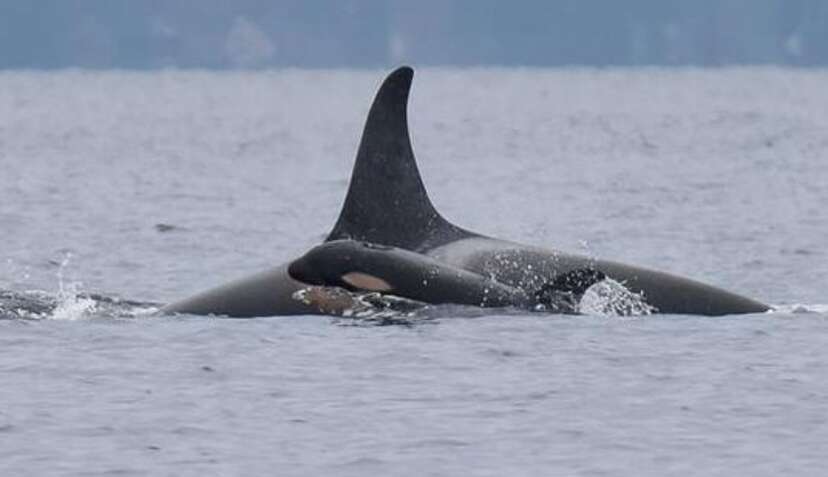Newborn Orca Calf Appears To Have Been Delivered By A Midwife

It's been less than a month since a newborn orca calf was spotted swimming with her family in the Pacific Northwest, offering hope for one of the planet's most endangered killer whale populations. But while the birth comes as welcome news for researchers and animal lovers alike, a tantalizing new clue about just how she was born speaks wonders to the remarkable relationship these animals share with one another.
Close observations of the young calf, dubbed J50, shortly after her birth have revealed something quite unexpected: bite marks on her dorsal fin. The marks aren't thought to have come from an act of aggression, however, but rather an act of love.
"I think it's very good evidence that a midwife was involved," Howard Garrett, co-director of the Orca Network, told The Dodo. "That's a sure sign that somebody grabbed that baby by the dorsal fin and pulled."
Garrett says that orcas in labor are known to be escorted by family members - often an aunt, sister or mother - but this is the first time he's aware that they've played an active role in delivering an offspring.
"I've seen photos of newborns for 20 years and I've never seen that before. It's something to get into the record books," says Garrett.
Though previously unrecorded, such behavior wouldn't be uncharacteristic for a species known to form some of the most close-knit familial bonds in the Animal Kingdom.
"I think it further confirms that they're always looking out for each other. They're always in tune with each other and act as a cohesive family entity all the time," Garrett says.
In recent days, J50 has been observed remaining close by J16, the 43-year-old killer whale who is believed to be her mother. With each new sighting, the newborn orca calf appears to be gaining strength, raising spirits that she too will survive into maturity to give birth to offspring of her own, thereby bolstering her pod's declining numbers.
While this new evidence of midwifery among orcas further underscores what researchers have long known about the family lives of these animals in the wild, it also sadly highlights yet another important part of the birthing process that their counterparts held in captivity, like at SeaWorld, are usually denied.
"It's probably rare that any mother's mother will be there for births in captivity, and probably no siblings either. It's such a fragmented prison-like situation that they wouldn't have that kind of assistance," says Garrett.
"It's completely different to be bound by concrete walls and foreigners and stresses, compared to being in the wide ocean surrounded by your big extended family."